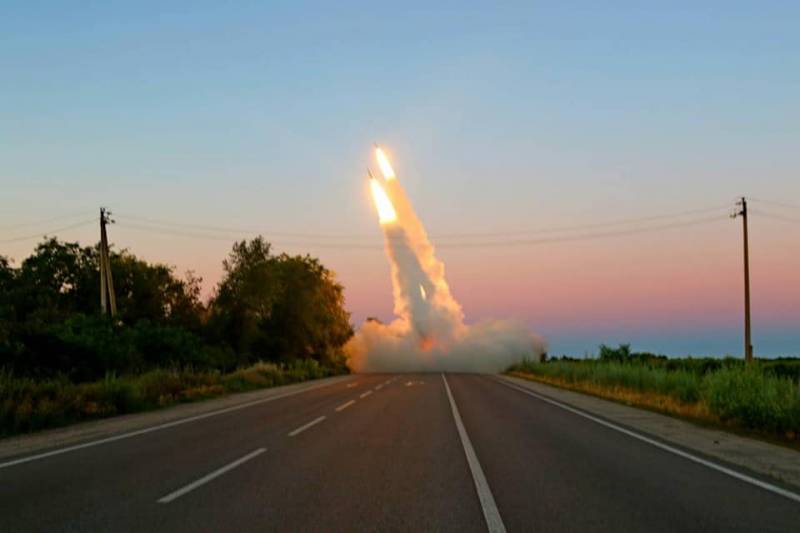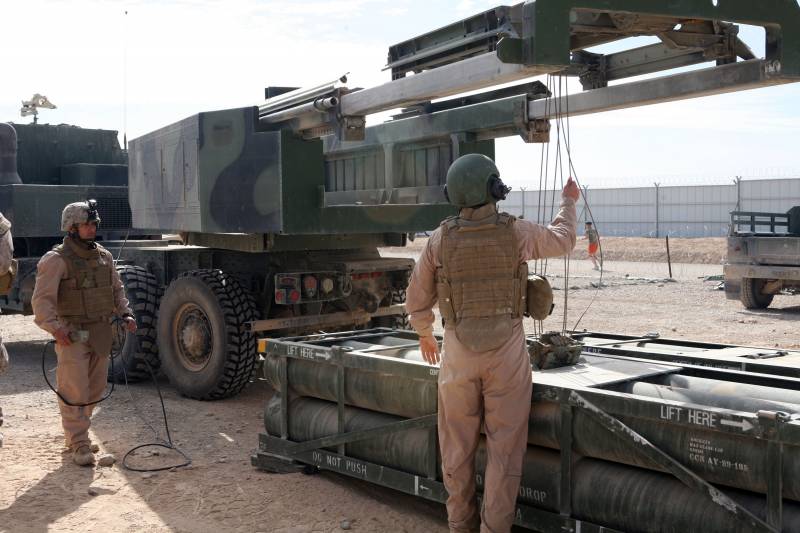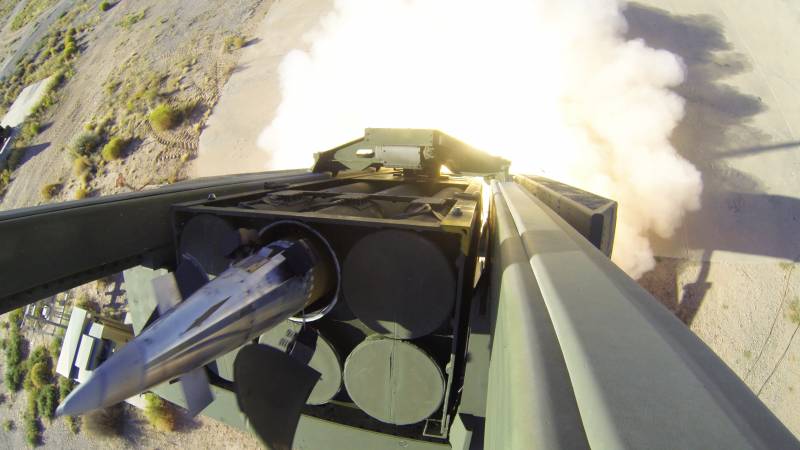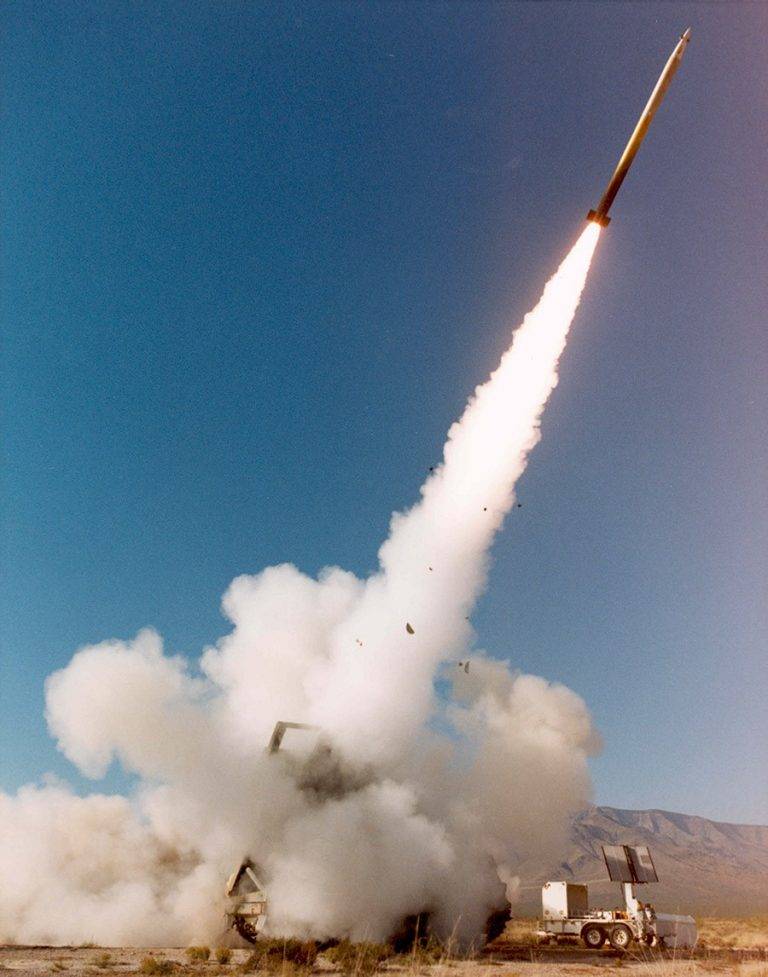Production and consumption: the situation around GMLRS missiles

One of the first episodes of HIMARS application in Ukraine. Photo by the Ministry of Defense of Ukraine
The American M270 MLRS and M142 HIMARS multiple launch rocket systems use unified ammunition from the Guided Multiple Launch Rocket System (GMLRS) family. Such missiles are mass-produced and supplied to the US Army or foreign partners. Their production continues and is planned to be maintained for the foreseeable future. The new agreement defines the basic conditions for production until 2026 inclusive.
Production orders
Guided missiles for the MLRS of the GMLRS line went into series in the middle of the 17s. The production of ammunition was mastered by their developer, Lockheed Martin. In the future, the Pentagon regularly issued contracts for the production of such products. For all the time we have acquired a total of XNUMX "lots" with a total value of several billion dollars.
Now preparing to release the next batches weapons. On April 27, the Pentagon and Lockheed Martin entered into a framework agreement for the release of "lots" No. 18 and No. 19. The total cost of the work was estimated at almost $4,8 billion. Deliveries will be made no later than October 30, 2026.
In accordance with the framework agreement, in the near future the parties will sign a firm contract for the next batch of GMLRS products. Its volume, cost and terms of implementation will be determined during negotiations with contractors. Then there will be another contract for "Lot 19", the terms of which will be determined separately. The timing of the work under the two contracts is unknown - only the ultimate goal is disclosed.

Loading TPK with missiles on the launcher. Photo by the US Department of Defense
The command of the ground forces acts as the customer. It is the army that will receive new gross missiles. At the same time, it is not clear for what purpose they were ordered. The new GMLRS may be intended to replenish their own US warehouse stocks or to be sent abroad as part of the next aid package. Perhaps this information will be disclosed later, incl. when signing firm contracts.
Production and consumption
Lockheed Martin launched the production of GMLRS shells back in the middle of the XNUMXs and quickly reached the calculated pace. In the future, several thousand missiles of all types and modifications were produced annually. The exact volumes depended on the specifics of the current contract and the needs of the customer or customers.
In November 2020, the 50th serial rocket rolled off the assembly line. The anniversary product was intended for the US Army. At that time, the manufacturing plant, fulfilling the existing order, produced approx. 9 thousand products per year - about 1,5 thousand standard transport and launch containers for one salvo.
According to known data, to date, the pace of production has decreased significantly. Now they call the possibility of producing only 6 thousand missiles per year - 1 thousand TPK. However, until recently, this amount of ammunition completely covered the needs of the US ground forces and foreign MLRS / HIMARS operators.
In the past year, the situation has changed dramatically. In June, the United States handed over the first batch of M142 combat vehicles and a significant amount of ammunition to the Kyiv regime. Subsequently, several dozen more American-style MLRS arrived in Ukraine. In addition, all new military-technical assistance packages provided for the supply of TPK with GMLRS missiles. The last package of this kind was approved on May 3.

GMLRS rocket launch. Photos Lockheed Martin
To date, several batches of missiles for HIMARS / MLRS have been handed over to Ukrainian formations. At the same time, even the approximate number of containers and ammunition was not called. According to various estimates, the total number of transmitted GMLRS may already reach several thousand. A significant proportion of these items are already lost or used up, requiring regular new deliveries.
It should be noted that not all GMLRS missiles were delivered to the combat zone and used for their intended purpose. Russian troops have repeatedly destroyed ammunition depots for HIMARS, as well as hit launchers on the march and in firing positions. In addition, missiles turned out to be not the most difficult target for Russian air defense systems. As a result, the real results of the application are not at all like the promises from advertising.
Stocks at risk
Deliveries of GMLRS products from the United States to Ukraine began in June 2022. They decided to arm the Ally at the expense of their own army - TPKs with missiles were taken from the warehouses of the American army. Probably, the Pentagon took into account the sad experience of previous deliveries of weapons to the Kyiv regime and therefore did not send rocket artillery alone. Soon, several other countries expressed their readiness to give Kyiv their American-style MLRS, as well as ammunition for them.
However, savings of this kind were insufficient. Already in early autumn, against the backdrop of the announcement of a new aid package, the US started talking about the risk of running out of its own GMLRS stocks. It turned out that the rate of deliveries of TPK from warehouses exceeds the rate of production of new products. If these trends continued, the American army risked eventually being left without a sufficient number of missiles for the MLRS.
Around the same time, proposals were made to expand production and increase the pace of deliveries of missiles to their own army. Then calculations appeared, according to which production should be increased to 14 thousand missiles per year. In this case, the United States will be able to continue supplying weapons to Ukraine, while at the same time restoring stockpiles and covering the current needs of its own army.

Launch of the GMLRS rocket by the M270 installation. Photos Lockheed Martin
However, reaching the required production rates may be associated with difficulties. Issues in this context have been reported regularly over the past few months. So, at the end of March, foreign media disclosed the opinion of Lockheed Martin. It turned out that she could not expand production to the required size and provide her own army and Ukraine with GMLRS shells. However, existing problems can be solved through new financial injections.
Apparently, the Pentagon and Lockheed Martin found a common language and determined the path of development of production. Thanks to this, a new framework agreement appeared on 27 April. It determines the future strategy for the production of ammunition for MLRS / HIMARS, and also stipulates the timing of the release and delivery of two new batches and their marginal cost. In this case, the exact parameters of each batch will be determined separately.
Risks and Threats
Thus, the situation around US-Ukrainian cooperation in the field of rocket artillery continues to evolve. Because of their political adventures and because of assistance to the Kyiv regime, the United States lost part of its HIMARS combat vehicles, and also reduced the stocks of GMLRS missiles for them. As a result, it is necessary to expand the production of all new products, but this process faces new difficulties.
Recent ones news may point to a solution to some of the current problems. The Pentagon and Lockheed Martin have determined the approximate terms of cooperation until 2026 and the release of two “lots” of products. In the near future, the first firm contract will appear and production will begin. In the meantime, apparently, the US Army will continue to supply missiles from its warehouses.
It is curious that the supply of American MLRS and GMLRS missiles already faced objective problems in the first months. Now they are trying to solve them and count on a positive result. It can be assumed that the Pentagon and the White House will find the necessary capabilities and resources, as a result of which the deliveries of HIMARS and GMLRS to Ukraine will continue for the time being, and they will also be able to make up for their own losses.
However, rocket artillery is not the only area of assistance in which certain problems are observed. For now, the US can still make the necessary deliveries and stay within acceptable limits. However, the costs are rising, and the difficulties and negative consequences are piling up. Whether all the negative factors can be overcome or whether the pace and volume of aid will have to be reduced, time will tell.
Information